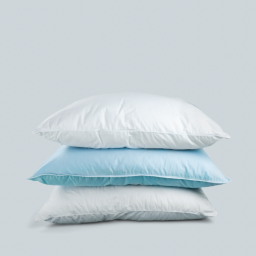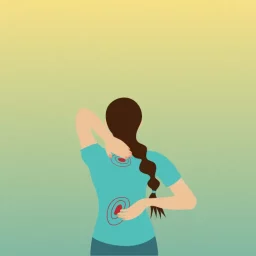What is Seasonal Affective Disorder (SAD)?
Seasonal affective disorder (SAD), is a type of depression that appears at certain times of the year. SAD is sometimes called winter depression or seasonal depression. It usually begins in the Fall when the days get shorter and lasts through the Winter. SAD doesn’t only happen in the colder months and a less common form of seasonal affective disorder affects people in the summer.
SAD and your Health
Have you ever noticed how a sun-shiny day adds an extra skip in your step? Or how a dark and dreary day can make you reach for the covers and feel like staying in bed? Everyone’s mood can be affected by the weather. The weather has a significant impact on our day, especially in Canada! It dictates what we wear, when we travel and what activities we choose to do. Our seasons change quickly and Winter can be a tough one for many. When the seasons change and bring long-term changes in temperature and length of day, some people can be affected more than others. Seasonal changes can affect your entire sense of well-being. If you find that you feel like a completely different person depending on the season, you may be battling seasonal affective disorder.
Who gets SAD?
About 2-3% of Canadians will experience SAD in their lifetime. Another 15% will experience a milder form of SAD that leaves them only slightly depressed, but still able to live their life without major disruptions. People with seasonal affective disorder make up about 10% of all depression cases. There are some groups of people who are at higher risk of seasonal affective disorder:
- Females – SAD is diagnosed more often in women than in men, but men may have more severe symptoms.
- Ages 15-55 – Young people have a higher risk of winter SAD, and winter SAD is less likely to occur in older adults.
- Families – People with SAD may be more likely to have blood relatives with SAD or another form of depression.
- Individuals with clinical depression or bipolar disorder – Symptoms of depression may worsen seasonally if you have one of these conditions.
- People living far from the equator – SAD appears to be more common among people who live far north or south of the equator. This may be due to decreased sunlight during the winter and longer days during the summer months.
causes
It isn’t really clear what causes SAD, but Winter SAD may be caused by lack of sunlight. Factors believed to contribute include:
Your biological clock (circadian rhythm). The decrease in sunlight may disrupt your body’s internal clock and its sleep-wake cycle, which can lead to feelings of depression.
Serotonin levels. A drop in serotonin, a brain chemical (neurotransmitter) that affects mood, might play a role in SAD. Reduced sunlight can cause a drop in serotonin which may trigger depression.
Melatonin levels. The change in season can disrupt the balance of the body’s level of melatonin, which plays a role in sleep patterns and mood.
Do you have SAD?
Symptoms of SAD come and go at about the same time each year. Most people with SAD start to have symptoms in September or October and feel better by April or May. You may be experiencing SAD if:
- Do you feel like sleeping all the time or are having trouble getting a good night’s sleep
- You are tired all the time, and it makes it hard for you to carry out daily tasks
- Your appetite has changed, particularly more cravings for sugary and starchy foods
- You are gaining weight
- You feel sad, guilty and down on yourself
- You feel hopeless
- You are irritable
- You are avoiding people or activities you used to enjoy
- You feel tense and stressed
If some of these feelings seem to happen each year, impact your daily life, and improve during certain seasons, you should talk to your healthcare provider. It is very important not to diagnose yourself without speaking to your healthcare provider, as there may be other causes for these symptoms, like thyroid problems or other types of depression.
How we treat it
Some common treatments for SAD include:
Light therapy:
- has been proven effective for people with seasonal affective disorder. Light therapy works by resetting your biological clock and it’s easy to use. Light boxes use fluorescent lights that are brighter than indoor lights but not as bright as sunlight. The intense artificial light causes a chemical change in the brain that improves mood and helps relieve SAD symptoms.
- Light therapy should not be done without first consulting your healthcare provider. 60-80% percent of people with SAD find substantial relief from light therapy.
Vitamin D:
- Vitamin D deficiency has long been associated with SAD, as well as more chronic depression. In fact, vitamin D deficiency is very common and should be a top consideration when you’re looking for a solution to flagging mood and energy—especially if it occurs during the fall and winter months. The shorter days of light provide us with decreased sunlight and it is recommended to supplement with daily Vitamin D. Vitamin D supplementation is important at all ages and Health Canada’s Dietary Recommended Intake is a good tool to gauge how much Vitamin D we all need.
Counselling:
- Cognitive-behavioural therapy (CBT), is effective for depression. A trained health professional in this field can help provide and teach skills to change your view of the world around you. CBT Therapists coach their patients and them break the negative patterns of depression including the thoughts and actions that can keep the depression going. CBT may be used alongside other treatments like light therapy.
Self-help:
- Regular exercise, a healthy diet, good sleep habits, staying connected to others, balanced thinking techniques, and managing stress have all been shown to reduce the symptoms of depression. These are helpful if you have only mild changes in your mood that follow a seasonal pattern. Therefore, doing these things can also help alongside treatment for more moderate or severe symptoms.
What can you do to prevent it?
Whatever treatment may be appropriate for your individual case, you can always make changes to your habits and lifestyle to help ease your winter blues:
- Spend more time outdoors during the day
- Try and maximize your exposure to daylight and plan your activities around the sunlight.
- Keep curtains open during the day
- Trim tree branches or hedges that may be blocking some of the light from getting into your home
- Move furniture so that you sit near a window or, if you exercise indoors, set up your exercise equipment by a window
- Install skylights and add lamps
- Build physical activity into your lifestyle preferably before SAD symptoms take hold. Physical activity relieves stress, builds energy and increases both your physical and mental well-being and resilience
- Make a habit of taking a daily daytime walk, particularly if you commute to school or work in the dark hours of the day
- Try to resist the carbohydrate and sleep cravings that come with SAD
When all else fails, try a Winter vacation this year in a sunny climate—if the pocketbook and work schedule allow. Keep in mind that the symptoms of SAD can recur after you return home. Don’t forget your sunscreen while you ditch the Winter blues!
















